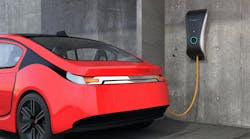Electrical distributors are a resilient breed. Think of what they have been through in the past few years. In “The Case of the Big Orange Steamroller,” Home Depot threatened to flatten distributors by courting their contractor customers with convenient hours, credit cards, loss-leader advertising ploys and miles of electrical department aisles. But distributors stole a few pages from Home Depot's own play book and beat the big orange colossus at its own game with clever merchandising and marketing strategies.
More recently, in “Bricks vs. Clicks,” Web mavens who didn't know an electrical distributor from the distributor cap in the engine of their fathers' 1971 Impalas began burning millions of dollars in venture capital in their attempt to rebuild distribution channels. But instead of using online storefronts to “cut out the middleman” as they had planned, they slashed their throats with poorly thought out business models that were solutions to problems that no one had. As it turned out, for all their bellyaching about prices and service, contractors and most other customers were surprisingly happy with distributors, and didn't see any immediate need to buy products online.
Fast-forward to today — “Consolidation Central.” The established national chains continue to grow and gain market share, as do international players like Rexel, Sonepar and Hagemeyer. Dozens of family-owned distributors sold their companies to one of these companies during the past few years, and more still would be selling out today if the multiples that acquirers were offering would spike up to where they were in the late 1990s.
Yet, despite the growing clout of the largest distributors, competition from home centers, and the Web phenomena, many privately held, family-owned electrical distributors have grown steadily — some at phenomenal double-digit annual growth rates each year that would make any publicly held company drool. The stories behind the growth of several of the fastest-growing electrical distributors begins on page 14. What makes these companies tick? Sure, some of them hit the occasional grand slam with a big construction project or national contract. But more often than not, it was “just” being exceedingly good at two of the most important distribution basics: striving to stay closer to the customer than competitors; and finding, hiring, training, motivating, and keeping the best employees in the market.
Will distributors be able to get this kind of double-digit annual growth in the future? The current economic picture will probably suck the oxygen out of any spectacular growth for most companies throughout much of the next year. But as we cycle out of this downturn, there will be growth opportunities again.
I want to place my bets right now on two specific market segments with the potential to provide this growth: voice/data and energy products. I am not going too far out on a limb to say that voice/data is a growth market — the business has been growing exponentially for more than a decade. But some relatively new market drivers are poised to carry the voice/data business to even greater heights: datamation and home networking.
In what's now called that “datamation” business, industrials are installing fiber-optic networks to link factory floor machinery to the offices of bean counters who want to track production runs real-time.
The home-networking market has profits written all over it — for those distributors that market themselves directly to builders as a supply source for products that support high-speed Web access, home theater, security and intercom systems.
I also see a green lining in the clouds hovering over California and its energy crisis. Despite the White House's lukewarm support of energy conservation as a partial solution to our power needs, the gas shortages and power crunches will push energy-efficient electrical products into the public consciousness faster than any marketing campaign.
The slowing economy does make things look a bit dark right now. But electrical distributors have been through down cycles before, survived them and prospered. This time they even have two golden market opportunities to help ease the pain.








